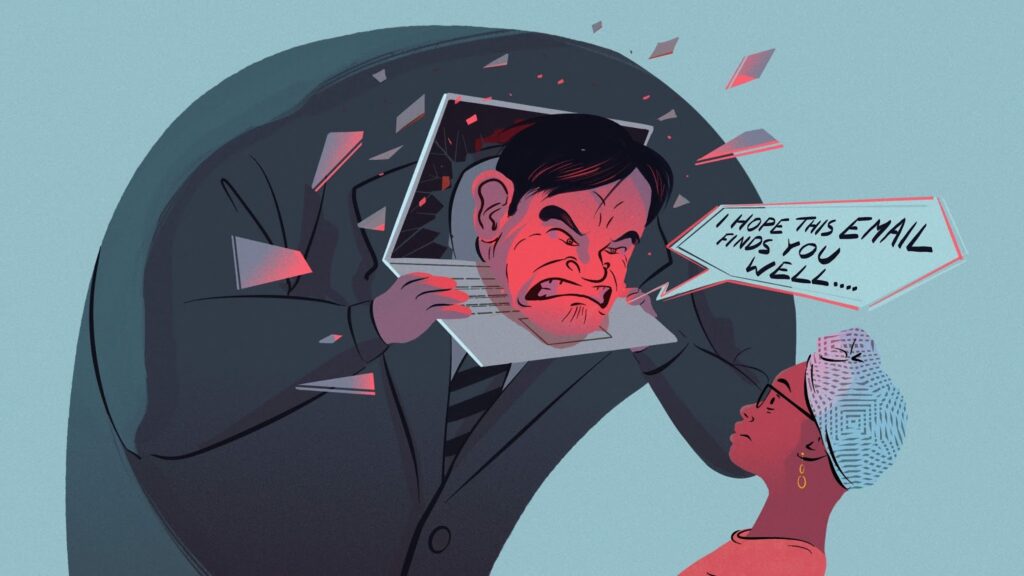Graduating from university is tough at the best of times. Those pursuing a freelance career are often left trying to piece together a portfolio while feeling like they have no ‘real world’ experience. The situation is even tougher for recent graduates, who are dealing with a world that feels like it’s stood still for 15 months.
However, it’s not impossible. So hold onto your graduation caps, as this guide takes you through building a professional portfolio straight out of university.
Think outside the box
You have more experience than you think. Yes, a portfolio is a collection of previous work that highlights your skills, experience, and passion but, (and here’s the trick), that work doesn’t have to be traditional paid employment.
Products you’ve created during internships, work experience placements, and voluntary work are all valuable building blocks for a portfolio. So are projects you’ve worked on for university and the Student Union – have you written for the student newspaper? Or designed an event poster?
Even personal projects count, such as artwork you’ve created for friends or blogs (or vlogs) you’ve posted online. Just because you haven’t earned an income from a project doesn’t make it worthless. If it shows your skills and passion then it’s valuable to your portfolio.
Plus, if you’re still worried your portfolio will look bare then do as Susan Heaton-Wright, an impact, presence and speaking trainer, recommends: “Do anything. If you hear your mum’s friend needs a small amount of work doing that could add to your portfolio do it.”
She adds, “Is there a charity that you could offer to do something for? Think about anything you are doing. Have you been taking photographs of your life in lockdown? Have you been doing vlogs? A podcast?”
Know what you’re making
A portfolio is a universally understood concept. However, they also come in different shapes and sizes so it’s important to know what form yours will take.
Annoyingly, there’s no one right answer and the style of portfolio varies from industry and individual. While people working in journalism tend to have a PDF or website, others working in film editing or acting may opt for a video portfolio. Meanwhile, some more visual industries – think art, design, photography etc – may even choose to use social media.
If possible, get hold of portfolios belonging to people you admire, who work in your chosen industry or a company you aspire to, and use that as a template. That will tell you more about industry style and what clients are looking for.
As a generalisation, the ideal portfolio is a simple website or PDF document that is easily available online as well as in hard-copy for face-to-face meetings.
Keep it relevant
They say ‘dress for the job that you want’. Well, the same goes for portfolios: build it for the job that you want. What industry do you want to work in? What sort of projects do you aspire to?
Once you’ve nailed that then choose to include only your most relevant experience. At the most simplest level this means that if, for example, you want to work in news journalism then it’s best to avoid filling your portfolio with your catering experience and instead focus on projects most relevant to news journalism.
This doesn’t mean that it should exclusively include projects that are 100 per cent relevant to a niche role – that’s a tough ask for any freelancer. Just make sure that everything you include has some relevance to the career you’re aiming for – a reason for being there.
Be selective
Whether you have a wealth of relevant work experience or not, be selective. Your portfolio is your ‘Greatest Hits’ and not an archive of everything you’ve ever done so think ‘quality over quantity’ and pick your best work to include. Which projects are you most proud of? Which best showcase your skills?
If you’re concerned that your ‘Greatest Hits’ is a little too slim then remember that clients are humans too and understand the effects of a world in lockdown.
As Susan says, “With the situation as it is at the moment, employers are not expecting you to have the same amount of experience due to the pandemic, but if you are able to show you are doing something, particularly creatively, that is very helpful.”
One quick tip: A portfolio doesn’t need to be chronological. In fact, put the projects that are the most relevant and that you’re most proud of at the top, so they’re the first thing potential clients see.
Keep it smart
Freelancers with design experience may want to flex those skills in creating their portfolio. However, for everyone else, it’s best to keep portfolios clean and simple. One image per project with some notes is more than enough – let your work speak for itself.
One of the most surprising challenges of portfolio building is finding images that are decent, usable, and clearly illustrate the project. That’s why it’s always handy to request a PDF or high-resolution image of a final product from any companies that you’ve worked with.
Another handy hack is graphic design mockups. These allow you to incorporate a chosen image into different templates of devices and objects, such as smartphones, posters, t-shirts, magazines etc.
So, someone who worked on branding for a website could transpose their design image into a shot of a computer screen, thereby clearly illustrating the project to potential clients. The end result looks much better than a quick snap taken of your laptop and is cheaper than hiring a professional photographer.
It may sound obvious, but always get a second opinion. A second set of eyes will not only be able to spot basic errors that you’re bound to have missed, (tip: always check for broken hyperlinks), but also confirm that it reads as well as intended and, ultimately, makes the right first impression.
Run your portfolio by someone you trust and, ideally, someone who works in the industry you aspire to. They will know what your target clients are looking for and be able to give invaluable advice on possible edits.
A portfolio’s job is never done
You’ve created a portfolio that you’re proud of; it’s relevant, curated, and smart. However, one thing that it will never be is ‘finished’. A portfolio is an ever-evolving beast and as your career progresses, technology moves on, your aims shift, and trends change, so too should your portfolio.
Update it every six months or so with projects that you’re eager to show off to new clients. As you add new projects remember to be selective and consider removing older, less relevant projects so your portfolio stays a lean, mean, curated machine.



